Anyone who is interested in observing birds, and who has lived in the same location for several years, will undoubtedly come to the realization, at some point in time, that they have seen all the common and easy-to-find birds in their local area. Seeing new species after then will depend on waiting for some unexpected vagrant or rarity to make an appearance, or traveling to some other location that holds its own set of distinctive birds. It took me a number of years to reach that point around my most recent home base, in the small coastal town of Bandon, Oregon, but, eventually I did. Around that same time, circumstances generally prevented me from travelling very far from home for a while, so I had a lot of built-up lack-of-new-bird exasperation to deal with. Now, with the imminent start of the World2 Tour I expect that situation to be completely relieved for the foreseeable future. At least, it will eventually.
It will take me a certain amount of time, and distance, to really get myself into a new territory that will be filled with new and exciting birds. Most of the species that live around the starting point of the Tour have ranges that extend east toward the Great Plains, and will be the most common species I see for at least the first few weeks of the Tour. Certainly, there will be an occasional nice sighting here and there, since there are a number of good birds that live in the high-elevation or drier parts of the North American West that we don’t have here on the coast. However, I have already seen some of those on earlier trips, so at this point I can’t quite predict where, or when, that first new species of the Tour will appear, but I will enjoy it whenever it happens. For now, here are some of the special birds that made living in this beautiful part of the World so appealing.
Probably one of the most common of the conspicuous birds around here is the Steller’s Jay. They are gregarious, noisy, and classically beautiful. I see them on just about every daily cycling ride I make, no matter which route I take. They can be tricksters, of course, since their ability to mimic the sounds made by other birds is well known, and they have fooled me on many occasions into stopping while cycling to try and find out what the strange bird in the area was. I can certainly forgive them for that, and they are one of the birds I will miss the most once I am far from here.
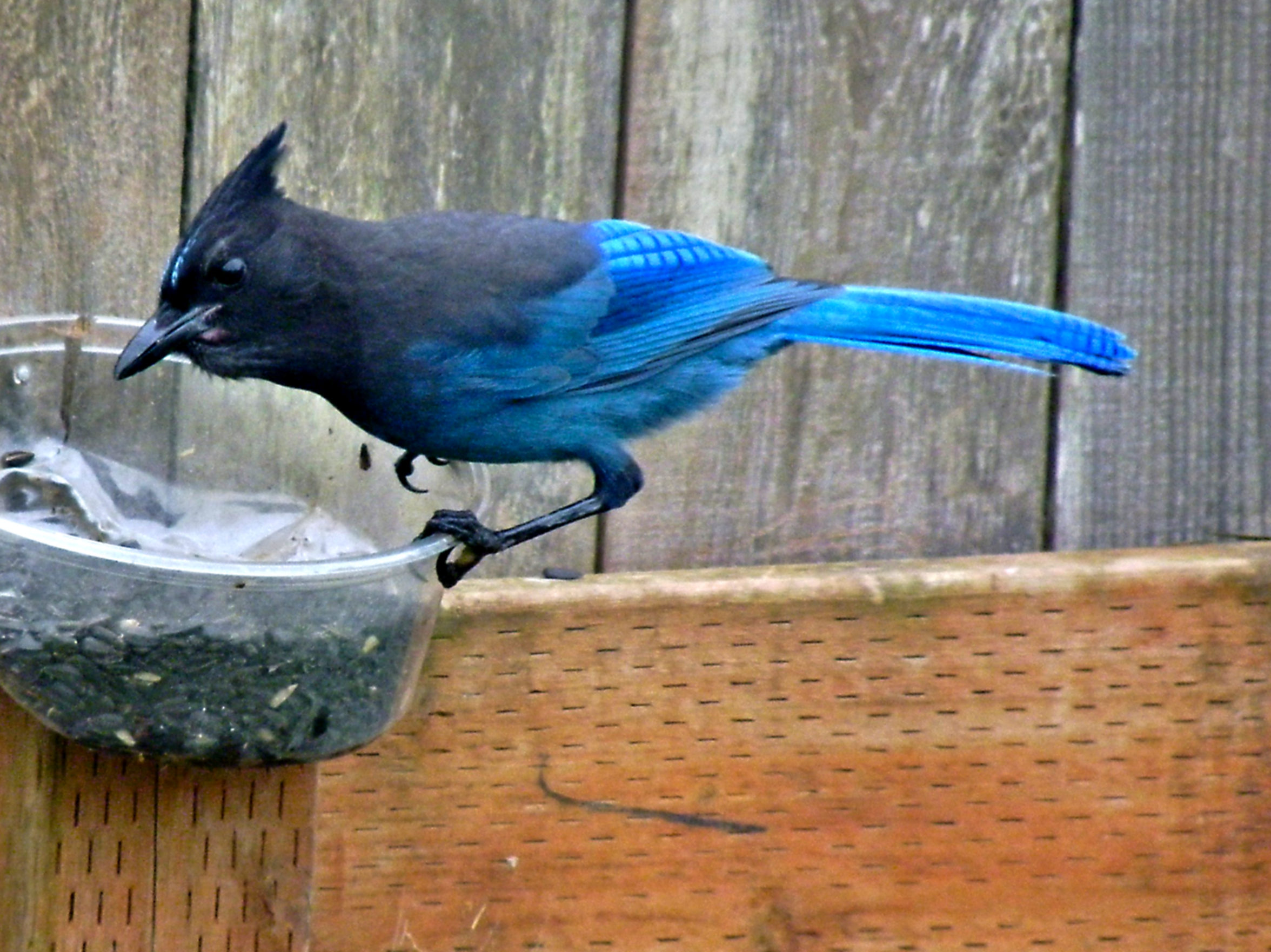
I have been in this area long enough to have noticed various changes in the populations of several birds that were common, or not, when I first arrived. The attractive Violet-Green Swallow is an example. They were quite numerous in my neighborhood for a number of years, but have been absent recently, for reasons I can’t explain. Their niche is still filled by their compatriots, the Tree Swallow and the Barn Swallow, the latter of which seems to have increased as the Violet-Greens have decreased.
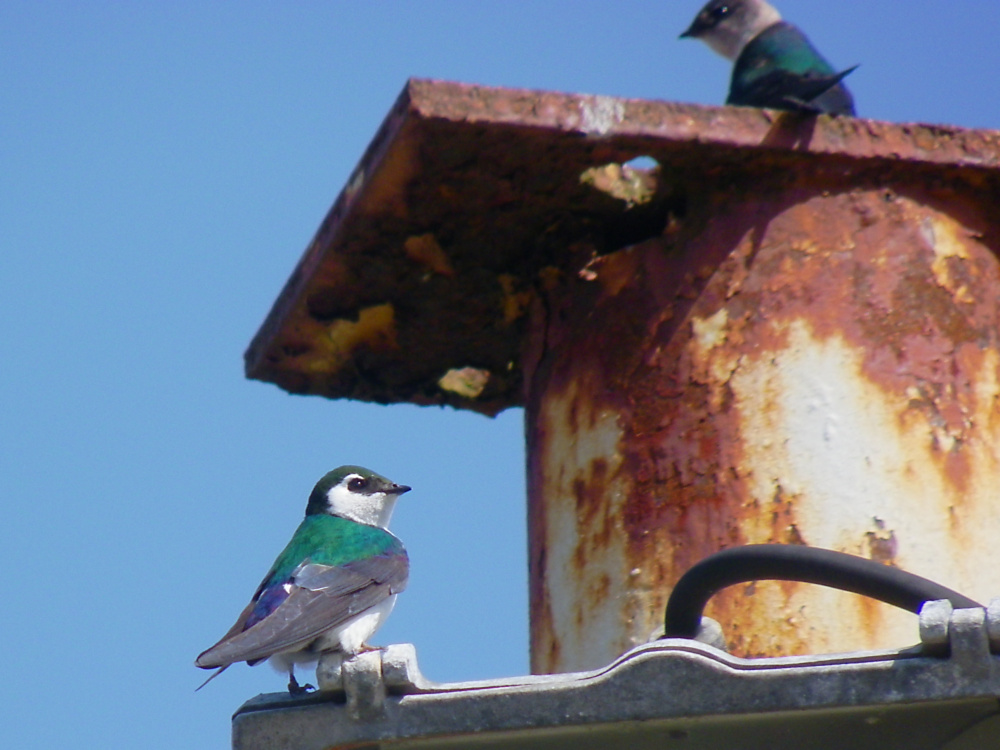
With regard to birds of the Raptor type, this area scores high in numbers, while perhaps not possessing the variety of species found in other parts of the World. The omnipresent Red-Tailed Hawk is the most common of course, with Red-Shouldered Hawk, Northern Harrier, Osprey, Turkey Vulture, American Kestrel, Copper’s Hawk and Short-Shinned Hawk easily seen in most cases. More infrequent visits by Peregrine Falcons, Merlin, and White-Tailed Kite complete the group. Additionally, a select group of Owls can be found in the area, all of which I have repeatedly failed to see. However, perhaps the most impressive of all, though one not seen a frequently as I might like, is the king of the skies, the Bald Eagle. They may be seen hunting over the Coquille River, or like the one shown below, resting on offshore rocks.
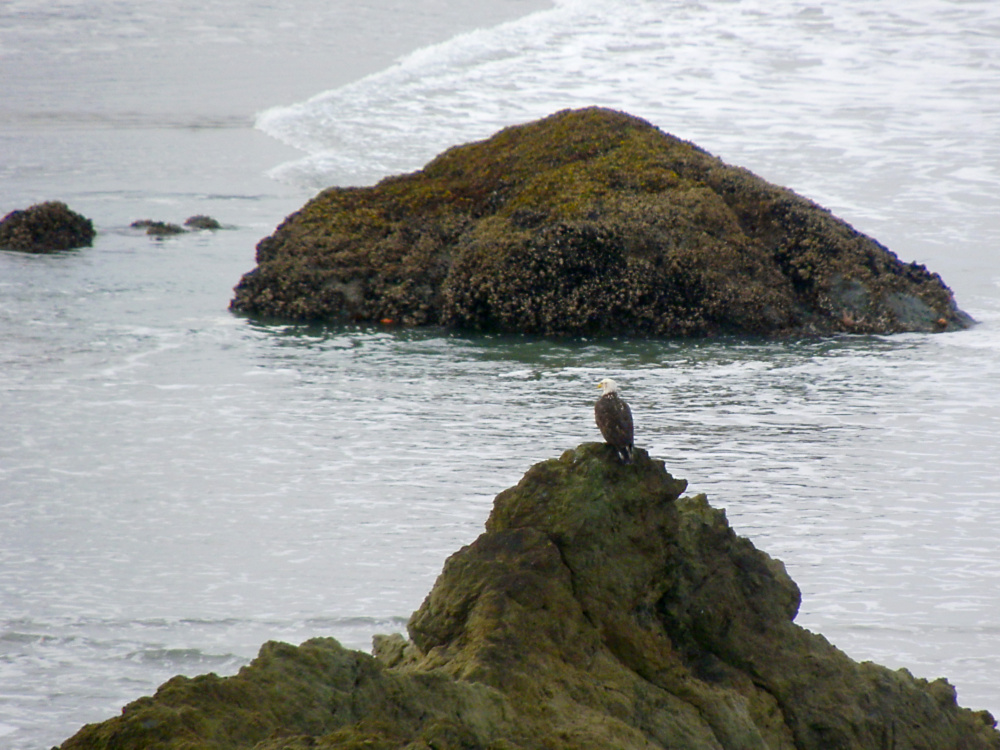
Speaking of offshore rocks, this is a coastal town, after all, and birds that are associated with water definitely make up a sizable fraction of the birding action in this area. Waterfowl, shorebirds, waders, and pelagic birds are well-represented. However, it is still a sore point with me that the larger estuary to our north, which is just a bit too far away by bicycle to make regular birding practical there, seems to attract more than its fair share of interesting marine birds compared to our own perfectly lovely and bird-friendly habitat. That is an issue for another time, I suppose, and shown below is one of my favorite aquatic species, a nice group of Brant, the beautiful goose that I had somehow missed seeing for the first half of my life, until I moved to this area.
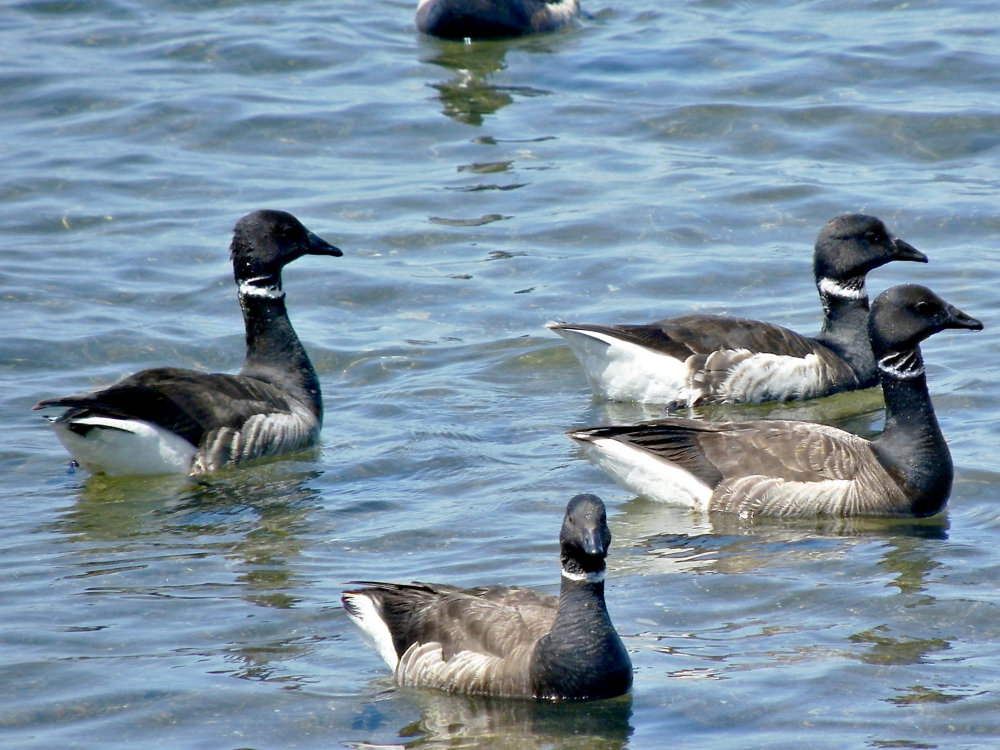
Ducks are usually present in large numbers, though I have noticed a disturbing decline in the last few years. At the shoreline, Surf Scoter are the most easily seen species, as well as Red-Breasted Merganser, and several others. Black Scoter are a more infrequent sighting, as are the attractive White-Winged Scoter, appearing below.
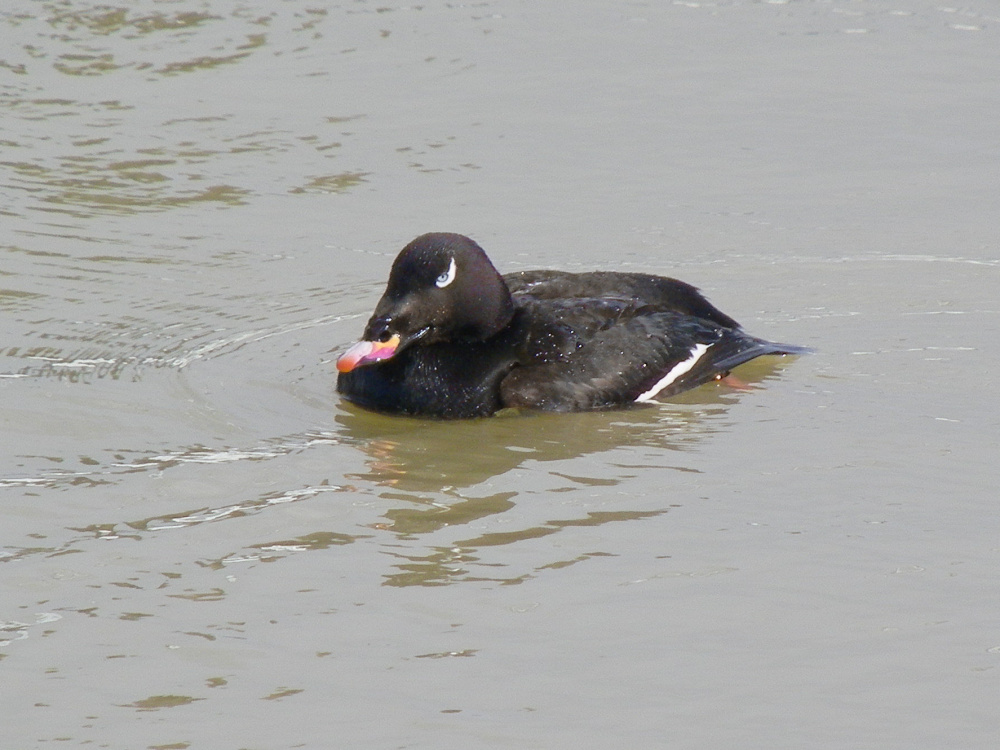
Of course, Gulls are almost always around and Terns usually join them in the Summer months. I admit that once I have made my initial sightings of the various common types in any given location, my desire to expend any effort sorting out the identification of the various phases of Gulls drops to near zero. In our case, Western Gull are by far the dominant species here, though many people seem to report more California Gull in the area than I ever seem to see. Glaucous-Winged Gull, rounds out the Big Three, with Mew Gull and Bonaparte’s Gull also making appearances. However, my favorite of all is the Heermann’s Gull, some of which occasionally pause here for a while as they make their way up and down the coast. Seeing them requires either good timing, or daily visits to the beach, but either way they are a welcome change.
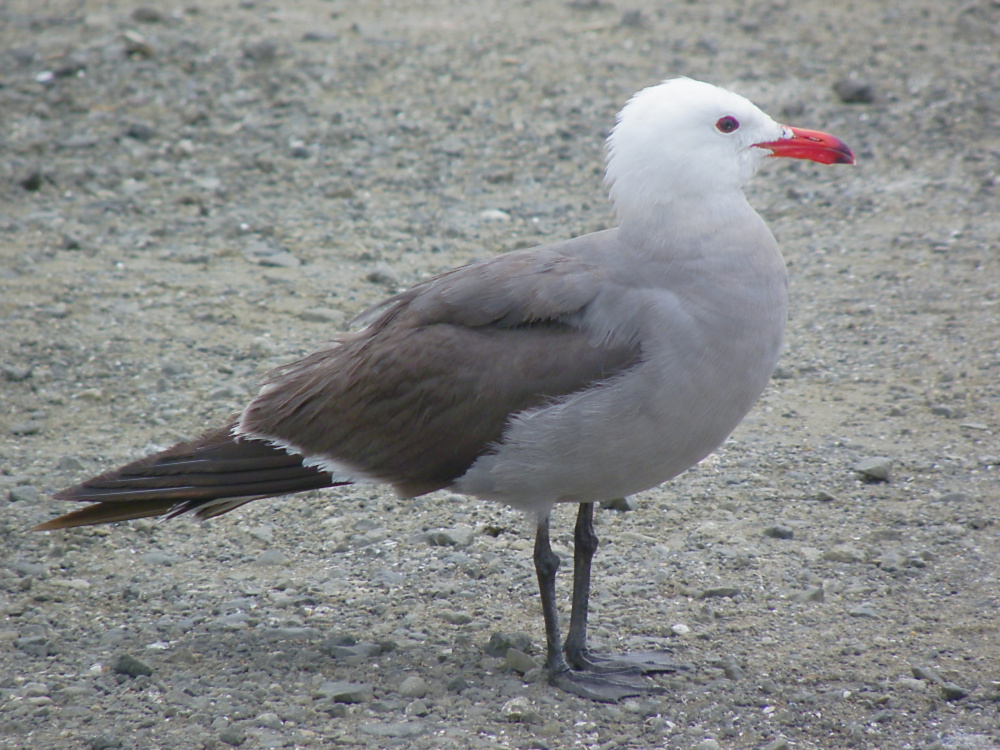
Probably the most esteemed marine bird of Pacific Coast is the lovable Tufted Puffin. A pair has made one of our large offshore rocks their home for several of the last years. Their den is far away enough, and high up enough, to make obtaining pleasing photos a bit of a challenge, but we appreciate them nonetheless. I have achieved much better close-up views of this species on a recent visit to St. George Island in the Pribilofs, but this pair still remains my favorite, because they are part of the local family.
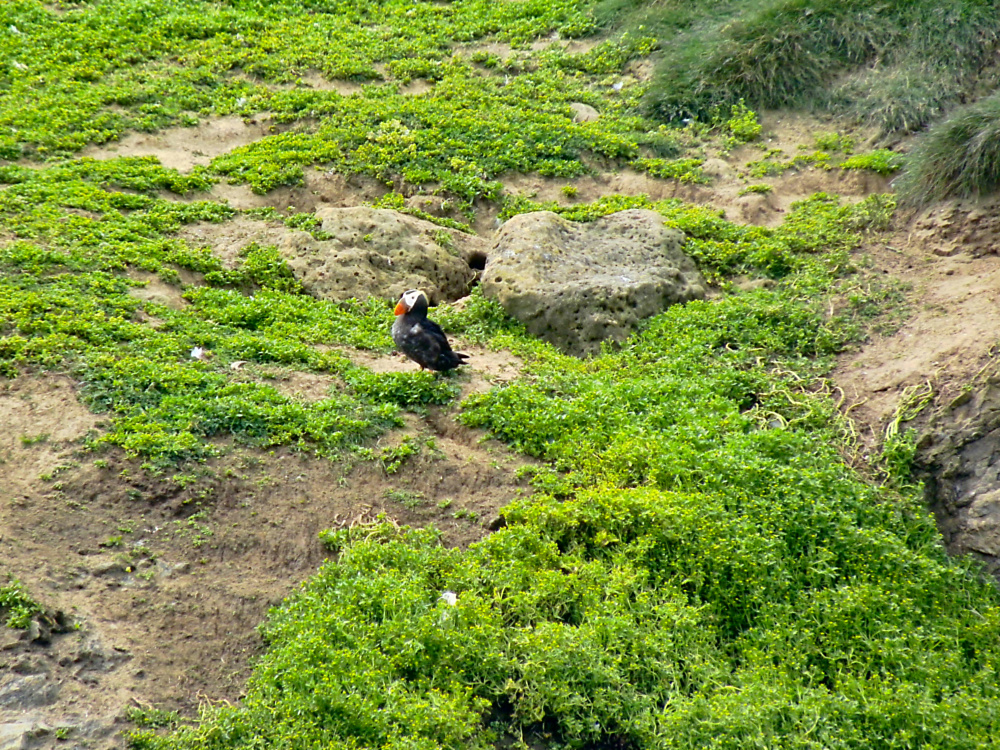
I would be remiss if I didn't include an example of my occasional lack of birding prowess. In the winter of 2012, the adorable little bird shown below arrived at my feeders, and stayed around my house for about six weeks. Since that was the rainy season, and a foul-tempered one it was, at that, the initial views I had of this bird were all through rain-streaked windows and I could barely see any details of its form. Consequently, I misidentified it at first, thinking it might have been an Orange-Crowned Warbler, which would not have been too extraordinary for this area at that time of the year. Once the weather finally improved, I was able to get much better images, and I quickly realized I had something else. Unfortunately, by the time I got around to showing my images to our local experts, the bird had departed.
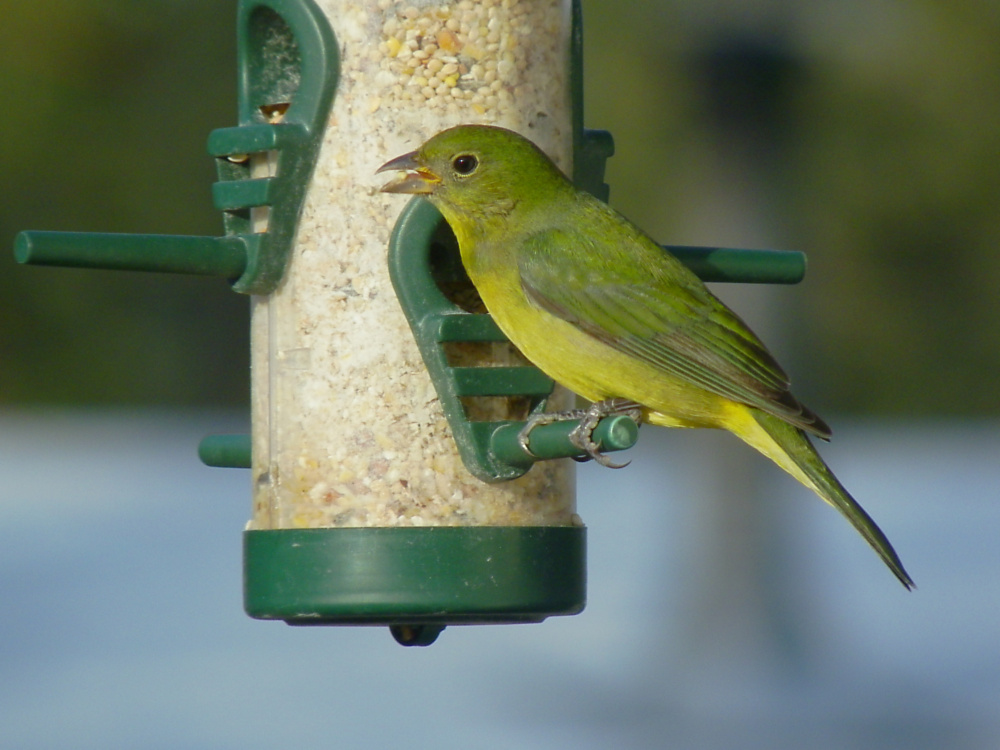
In short order, I was informed that this was actually a female Painted Bunting. Quite an unexpected bird for this part of the World! If it had been a male, one of most brightly colored birds of North America, and one that I had, just weeks prior, placed on my most-want-to-see list,
I would have correctly identified it right away. Instead, I went with the when in doubt, choose the most common possibility
method, and failed miserably. Needless to say, the local birding community was very annoyed with me that a rarity like that had gotten away without displaying for the entire group. Happily, the same bird, presumably, returned to our area two years later, this time in a location frequented by other interested birders, and good views were had by all.
I cannot promise that I will not make similar blunders in my identification of birds during World2, but I will try my best to make sure that doesn’t happen. Some of those strange birds from other continents can be extremely confounding, however. Especially the females.